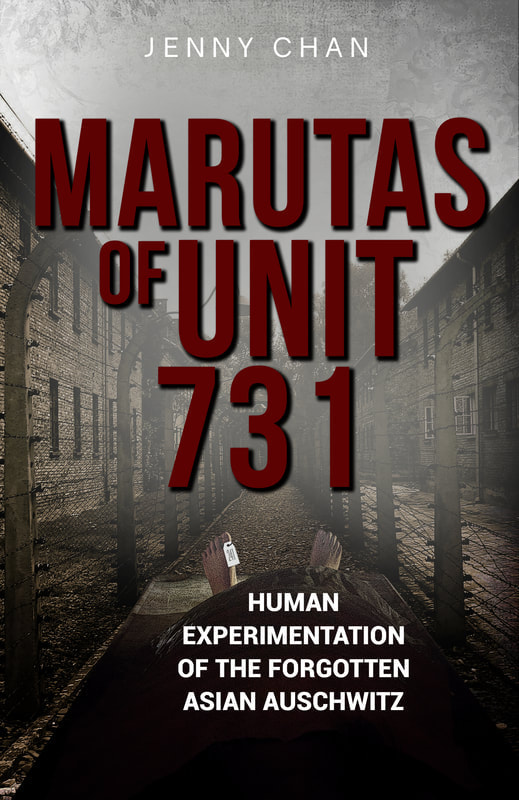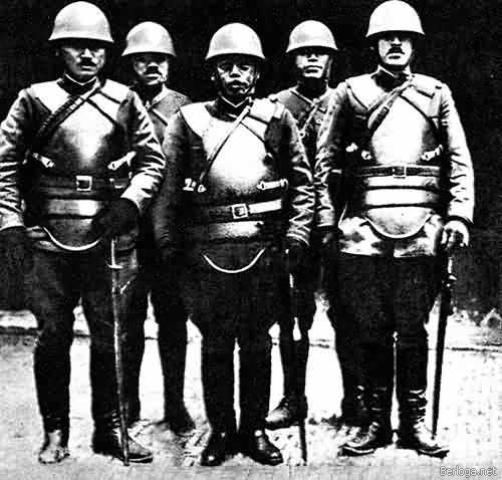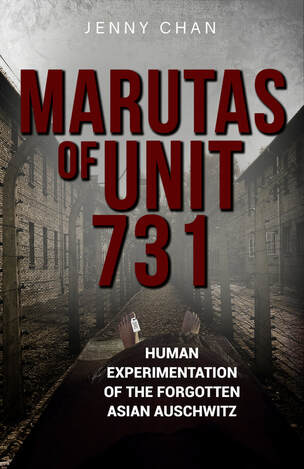- Home
- Stories
-
Internship
- Summer 2024 Internship
- Summer 2023 Internship
- Fall 2022 Internship
- Summer 2022 Internship
- Summer 2021 Internship
- Fall 2020- Spring 2021 Internship
- Summer 2020 Internship
- Fall 2019 Internship
- Summer 2019 Internship >
- School Year 2018-2019 Internship
- Summer 2018 Internship >
- Fall 2017 Internship
- Summer 2017 Internship >
- Books
- Archives
-
Resource Page
-
Supplementary Research Guides
>
- Unit 731 - Guide >
-
Philippines' Resistance - Guide
>
- Philippines World War II Timeline
- The Japanese Invasion & Conquest of the Philippines
- Bataan Death March
- Formation of Underground Philippines Resistance
- Supplies of the Guerrilla Fighters
- The Hukbalahap
- Hunter's ROTC
- Marking's Guerrillas
- United States Army Forces in the Philippines of Northern Luzon (USAFIP-NL)
- The Aetas
- Chinese and Filipino-Chinese Nationalist Guerrilla Units
- The Female Faces of the Philippine Guerrillas
- Rising Sun Flag - Guide >
- Pinay Guerrilleras - Guide >
- Fall of Singapore - Guide >
- Three Years and Eight Months - Guide >
- Siamese Sovereignty - Guide >
- The Khabarovsk War Crimes Trial - Guide >
- Unit 731 Cover-up : The Operation Paperclip of the East - Guide >
- Marutas of Unit 731 - Guide >
- Prince Konoe Memoir - Guide >
- Competing Empires in Burma - Guide >
- Battle of Shanghai - Guide >
- Ishi Shiro - Guide >
- Taiwan The Israel of the East - Guide >
- Seeking Justice for Biological Warfare Victims of Unit 731 - Guide >
- Rice and Revolution - Guide >
- Clash of Empires - Guide >
-
Hunger for Power and Self-SufficiencyI - Guide
>
- The Influence of War Rations on Post-War Culinary Transformations
- How World War II Complicated Food Scarcity and Invention
- American Military Innovations
- Government-Sponsored Food Inventions in Europe during World War II
- Feeding the Army: The Adaptation of Japanese Military Cuisine and Its Impact on the Philippines
- Mixed Dishes: Culinary Innovations Driven by Necessity and Food Scarcity
-
Denial A Quick Look of History of Comfort Women and Present Days’ Complication - Guide
>
- The Comfort Women System and the Fight for Recognition
- The Role of Activism and International Pressure
- The Controversy over Japanese History Textbooks
- The Sonyŏsang Statue and the Symbolism of Public Memorials
- Activism and Support from Japanese Citizens
- The Future of Comfort Women Memorials and Education
- Echoes of Empire: The Power of Japanese Propaganda - Guide >
- Lesson Plans >
-
Supplementary Research Guides
>
The Delivery of Weapons
The delivery of weapons needed to be proven scientifically and it was the duty of the 2nd division with airplane bombers to handle tests of bacteriological weapons on a proving ground as well as under battle conditions for the mass extermination of human beings. Because the Anta Testing Grounds were only 146 kilometers north of Harbin, Ishii used a light aircraft for the short flight if the only people traveling were him and his aide. According to Kawashima during an interrogation of the Khabarovsk Trial on December 25, “In the summer of 1941, the Chief of the detachment, Ishii, called a conference of all the chiefs of divisions and informed us that an instruction had been received from the Chief of Staff of the Japanese Army, the substance of which was as follows: Detachment 731 had done good work in preparation for bacteriological warfare and, in particular, in the breeding of plague fleas on a mass scale. Plague fleas were of great operational and strategical interest, and it was therefore instructed that research work in this field should be intensified. The Chief of the detachment pointed out that one of the detachment’s weakest points was its inadequate facilities for breeding fleas on a mass scale, and that “all attention must be focused on the mass production of fleas.”
The 2nd division controlled an aircraft unit with specially equipped planes near the Anta testing grounds as well as a section that engaged in the cultivation and breeding of parasites intended to cause plague epidemics. In a testimony by Kawashima during the Khabarovsk Trial, he stated, “… With the available equipment and its rate of output, the Production Division… could manufacture as much as 300 kilograms of plague bacteria monthly, or 800 to 900 kilograms of typhoid germs”. This was also verified by another accused in the Khabarovsk Trial, “… The monthly output of the germ producing division could be raised… if all its equipment were fully operated, to about 300 kilograms of plague bacteria.”
Special Weapons for Germs Dissemination
The wholesale breeding of fleas using rodents such as mice and rats was also utilized as a line of defense as a type of bacteriological weapon, not only
for the personnel bacteriological unit’s personnel, but also by special squads detailed from line troops of the Kwantung Army. In Branch 543 of Ishii’s Network in Hailar, there were about 13,000 rats in the summer of 1945.35 In fact, there were multiple branches of Unit 731 close to the Mongolian People’s Republic and the Soviet Union in locations such as Sunyu, Hailar, Linkow, and Hailin.
for the personnel bacteriological unit’s personnel, but also by special squads detailed from line troops of the Kwantung Army. In Branch 543 of Ishii’s Network in Hailar, there were about 13,000 rats in the summer of 1945.35 In fact, there were multiple branches of Unit 731 close to the Mongolian People’s Republic and the Soviet Union in locations such as Sunyu, Hailar, Linkow, and Hailin.
Samurais
The Chief of Branch 673 of Unit 731 was located in the town of Sunyu, and the Chief of the Training Division of the detachment, Nishi Toshihide, testified that, From January 1943 to July 1944, and then from June to August 1945, I was in charge of Branch 673 of Detachment 731 in the town of Sunye, which was engage in breeding white rats, mice, and guinea pigs, in catching field rodents and in breeding fleas… In particular, the breeding and catching of rodents and the breeding of fleas to be sent to Detachment 731 were intensified, since the spreading of plague germs by scattering plague-infected fleas was regarded as the most effective means of bacteriological warfare.” It was to be kept an extreme secret as he continued, “On August 11-12, 1945, owing to the advance of the Soviet Army, and with the object of concealing the fact that weapons for conducting bacteriological warfare had been manufactured in the Japanese Kwantung Army and that Branch 673 of Detachment 731 under my command had been involved in these criminal activities, on my orders all the branch’s service premises and living quarters, equipment, materials, and documents were destroyed by fire, and for the same purpose, on my orders, on August 14, 1945, poison in the shape of potassium cyanide was issued to the entire personnel (120 men) to be taken by them to commit suicide in the event of the danger arising of their being captured by the Soviet forces.”
They also designed special weapons for germs dissemination: sprayers in the form of fountain pens and walking sticks, porcelain aerial bombs, and others for sabotage missions. Unit 731’s and Unit 100’s production facilities were designed for an active prosecution of bacteriological warfare.36 According to the Japanese Imperial Army’s plans, specially equipped aircraft, specially trained army units, and sabotage squads were to disseminate large quantities of lethal germs of plague, cholera, typhoid, glanders, anthrax, and other severe infectious diseases along the enemy’s territory targeting soil, water sources, wells, crops, and cattle, and every possible front. The purpose was to cause epidemics among the civilian population that would result in millions of painful deaths.
They also designed special weapons for germs dissemination: sprayers in the form of fountain pens and walking sticks, porcelain aerial bombs, and others for sabotage missions. Unit 731’s and Unit 100’s production facilities were designed for an active prosecution of bacteriological warfare.36 According to the Japanese Imperial Army’s plans, specially equipped aircraft, specially trained army units, and sabotage squads were to disseminate large quantities of lethal germs of plague, cholera, typhoid, glanders, anthrax, and other severe infectious diseases along the enemy’s territory targeting soil, water sources, wells, crops, and cattle, and every possible front. The purpose was to cause epidemics among the civilian population that would result in millions of painful deaths.
Related Book
Marutas of Unit 731: Human Experimentation of the Forgotten Asian AuschwitzEuphemistically labeled as the "Water Supply and Prophylaxis Administration" and "HippoEpizootic Administration" of the Imperial Japanese Army, Unit 731 and Unit 100, as well as their subsidiary branches, performed human experimentation on the innocent under the leadership of Commanding Officer and Doctor Ishii Shiro. The Kempeitai (military police) captured the "lab rats" for Unit 731's prison. The prisoners included Chinese patriots, nearby civilians, Russians, and Allied prisoners of war. Although the exact number of victims is unclear due to Japan's attempts to liquidate evidence of their heinous crimes at the closing of the war, it is estimated to have ranged from 3,000-250,000 innocent men, women, and children. The cruel experiments and medical procedures were carried out by the brightest medical students, scientists, researchers, and staff that Imperial Japan had to offer.
To dehumanize prisoners in their minds, the scientists of Unit 731 called their test subjects "Marutas" or logs. Unit 731 faculty's observation of Marutas included their reaction to bubonic plague, typhoid, paratyphoid A and B, typhus, anthrax, smallpox, tularemia, infectious jaundice, gas gangrene, tetanus, cholera, dysentery, glanders, scarlet fever, undulant fever, tick encephalitis, "songo" or epidemic hemorrhagic fever, whooping cough, diphtheria, pneumonia, erysipelas, epidemic cerebrospinal meningitis, venereal diseases, tuberculosis, salmonella, frostbites, and many more deadly viruses, germs, and bacteria. To observe the real-time effects of these harmful agents, these prisoners were often subject to vivisections without the use of anesthesia. In the case where a human experimental subject was exhausted from the experiments, they were to be killed one way or another. Some test subjects were handed potassium cyanide tablets, while others ingested porridge with heroin. These "medical doctors" who performed routine human experiments were allowed to escape persecution, unlike their Nazi counterparts in Europe. This affair became infamously known as the elaborate American cover-up of war crimes, offering these perpetrators of crimes against humanity-- including Emperior Hirohito and Ishii Shiro--immunity in exchange for US access to Unit 731 research. Instead of punishment, many of these criminals were rewarded handsomely with great careers after the war, while thousands of Chinese families mourned their loved ones' lives which had lost at Unit 731 or dealt with the permeating consequences of sustaining a bacterial attack in their village. |
|
Pacific Atrocities Education
730 Commercial Street San Francisco, CA 94108 415-988-9889 |
Copyright © 2021 Pacific Atrocities Education.
We are a registered 501 (c)(3) charity. |
- Home
- Stories
-
Internship
- Summer 2024 Internship
- Summer 2023 Internship
- Fall 2022 Internship
- Summer 2022 Internship
- Summer 2021 Internship
- Fall 2020- Spring 2021 Internship
- Summer 2020 Internship
- Fall 2019 Internship
- Summer 2019 Internship >
- School Year 2018-2019 Internship
- Summer 2018 Internship >
- Fall 2017 Internship
- Summer 2017 Internship >
- Books
- Archives
-
Resource Page
-
Supplementary Research Guides
>
- Unit 731 - Guide >
-
Philippines' Resistance - Guide
>
- Philippines World War II Timeline
- The Japanese Invasion & Conquest of the Philippines
- Bataan Death March
- Formation of Underground Philippines Resistance
- Supplies of the Guerrilla Fighters
- The Hukbalahap
- Hunter's ROTC
- Marking's Guerrillas
- United States Army Forces in the Philippines of Northern Luzon (USAFIP-NL)
- The Aetas
- Chinese and Filipino-Chinese Nationalist Guerrilla Units
- The Female Faces of the Philippine Guerrillas
- Rising Sun Flag - Guide >
- Pinay Guerrilleras - Guide >
- Fall of Singapore - Guide >
- Three Years and Eight Months - Guide >
- Siamese Sovereignty - Guide >
- The Khabarovsk War Crimes Trial - Guide >
- Unit 731 Cover-up : The Operation Paperclip of the East - Guide >
- Marutas of Unit 731 - Guide >
- Prince Konoe Memoir - Guide >
- Competing Empires in Burma - Guide >
- Battle of Shanghai - Guide >
- Ishi Shiro - Guide >
- Taiwan The Israel of the East - Guide >
- Seeking Justice for Biological Warfare Victims of Unit 731 - Guide >
- Rice and Revolution - Guide >
- Clash of Empires - Guide >
-
Hunger for Power and Self-SufficiencyI - Guide
>
- The Influence of War Rations on Post-War Culinary Transformations
- How World War II Complicated Food Scarcity and Invention
- American Military Innovations
- Government-Sponsored Food Inventions in Europe during World War II
- Feeding the Army: The Adaptation of Japanese Military Cuisine and Its Impact on the Philippines
- Mixed Dishes: Culinary Innovations Driven by Necessity and Food Scarcity
-
Denial A Quick Look of History of Comfort Women and Present Days’ Complication - Guide
>
- The Comfort Women System and the Fight for Recognition
- The Role of Activism and International Pressure
- The Controversy over Japanese History Textbooks
- The Sonyŏsang Statue and the Symbolism of Public Memorials
- Activism and Support from Japanese Citizens
- The Future of Comfort Women Memorials and Education
- Echoes of Empire: The Power of Japanese Propaganda - Guide >
- Lesson Plans >
-
Supplementary Research Guides
>


